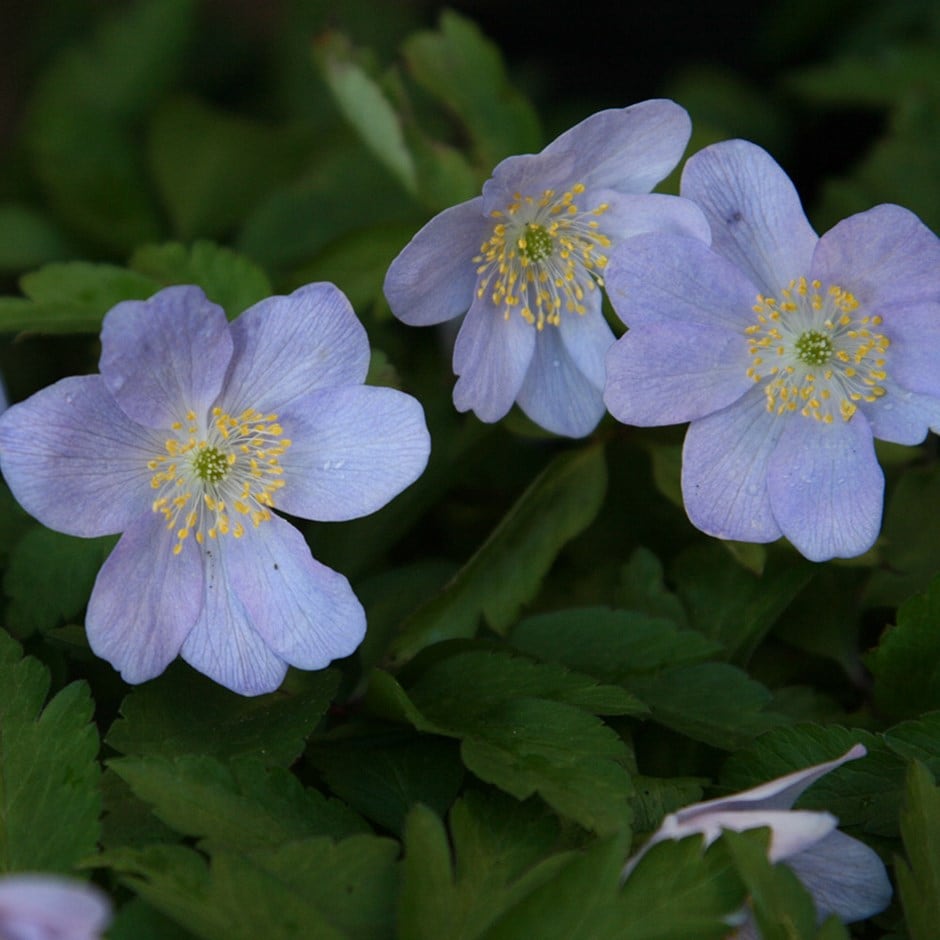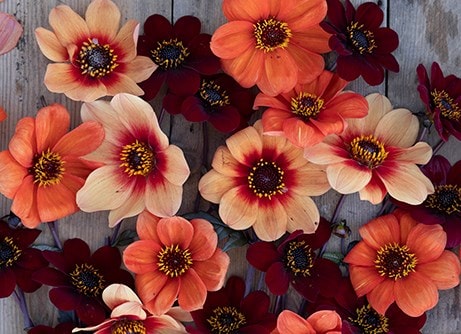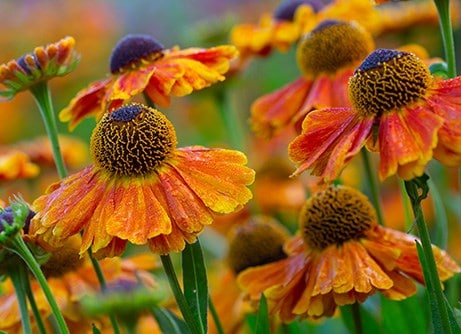
Usually very difficult to find (and very expensive when you do), this lovely anemone deserves a place in the border under a big shrub or small tree, like a lilac or crab apple. It's also lovely on banks where you can appreciate the large rounded, pale blue flowers which have a striking lavender grey reverse to the petals.
Hardy and very easy to grow, it forms good clumps and flowers for a long time. An old variety named at the Oxford Botanical Garden in 1870, like most anemones it prefers a humus-rich, leafy soil in light shade under deciduous trees. The foliage tends to die down in the summer, ready to re-emerge the next spring.
Hardy and very easy to grow, it forms good clumps and flowers for a long time. An old variety named at the Oxford Botanical Garden in 1870, like most anemones it prefers a humus-rich, leafy soil in light shade under deciduous trees. The foliage tends to die down in the summer, ready to re-emerge the next spring.
How to care for Anemone nemorosa Robinsoniana:
Plant rhizomes horizontally 5–8cm (2–3in) deep in September or October, ideally in humus-rich, moist but well-drained soil. Choose a spot in partial or light shade, such as under deciduous trees, where they can form naturalistic drifts.
Once established, they need little maintenance—avoid disturbance and allow the foliage to die back naturally. Keep the soil moist in spring during active growth, but dry in summer dormancy. Don’t feed, as they thrive in low-nutrient conditions.
Once established, they need little maintenance—avoid disturbance and allow the foliage to die back naturally. Keep the soil moist in spring during active growth, but dry in summer dormancy. Don’t feed, as they thrive in low-nutrient conditions.
Flowering period:
- Jan
- Feb
- Mar
- Apr
- May
- Jun
- Jul
- Aug
- Sep
- Oct
- Nov
- Dec
Eventual height:
0.15m
Eventual spread:
0.3m
Position:
Light shade
Rate of growth:
Fast-growing
Soil:
Moderately fertile, moist, well-drained soil
Hardiness:
Fully hardy
-
Humans/Pets: Ornamental bulbs - not to be eaten
Product options

5 × rhizomes
£17.99
£3.60 each
available to order from summer
Unavailable

15 × rhizomes
£35.98
£2.40 each
available to order from summer
Unavailable
1
Delivery options (pick your preferred option at checkout)
Bulbs (only)£4.99
Goes well with
Lamprocapnos spectabilis 'Alba'
bleeding heart (syn. Dicentra spectabilis Alba)
From £9.99
View options
| 9cm pot | £9.99 |
|
|
| 3 × 9cm pots | £24.99 |
|
|
| 6 × 9cm pots | £39.99 |
|
|
| 2 litre pot | £17.99 |
|
|
| 3 × 2 litre pots | £39.99 |
|
View details
Dryopteris filix-mas
male fern
From £9.99
View options
| 2 litre pot | £18.99 |
|
| 3 × 2 litre pots | £44.99 |
|
| 9cm pot | £9.99 |
|
| 3 × 9cm pots | £19.99 |
|
View details
Bulb planting auger - long
From £7.99
View options
| large | £15.99 |
|
| medium | £11.99 |
|
| small | £7.99 |
|
| set of 3, save £6 | £29.97 |
|
View details
Bulb planting auger - short
From £6.99
View options
| medium | £11.99 |
|
| small | £6.99 |
|
| large | £14.99 |
|
| set of 3, save £5 | £28.97 |
|
View details
Polygonatum × hybridum
common Solomon's seal
From £12.99
View options
| 2 litre pot | £20.99 |
|
|
| 9cm pot | £12.99 |
|
|
| 3 × 9cm pots | £27.99 |
|
|
| 6 × 9cm pots | £39.99 |
|
View details










